
Thomas Alan Waits is an American musician, composer, songwriter, and actor. His lyrics often focus on the underbelly of society and are delivered in his trademark deep, gravelly voice. He began in the folk scene during the 1970s, but his music since the 1980s has reflected the influence of such diverse genres as rock, country, Delta blues, opera, vaudeville, cabaret, funk, hip hop and experimental techniques verging on industrial music. Per The Wall Street Journal, Waits “has composed a body of work that’s at least comparable to any songwriter’s in pop today. A keen, sensitive and sympathetic chronicler of the adrift and downtrodden, Mr. Waits creates three-dimensional characters who, even in their confusion and despair, are capable of insight and startling points of view. Their stories are accompanied by music that’s unlike any other in pop history.”

The Queen Is Dead is the third studio album by the English rock band the Smiths. It was released on 16 June 1986 in the UK by Rough Trade Records, and on 23 June 1986 in the US by Sire Records.
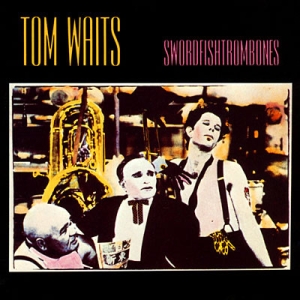
Swordfishtrombones is the eighth studio album by singer and songwriter Tom Waits, released in 1983 on Island Records. It was the first album that Waits produced himself. Stylistically different from his previous albums, Swordfishtrombones moves away from conventional piano-based songwriting towards unusual instrumentation and a somewhat more abstract and experimental rock approach. It is often considered the first in a loose trilogy that includes Rain Dogs and Franks Wild Years. Per The Guardian, "These are records of startling originality and playfulness, of cacophonous discord and sudden heartbreaking melody, in which it seemed the artist was trying to incorporate the whole history of American song into his loose-limbed poetic storytelling."

Ten is the debut studio album by American rock band Pearl Jam, released on August 27, 1991, through Epic Records. Following the dissolution of their previous band Mother Love Bone in 1990, bassist Jeff Ament and guitarist Stone Gossard began rehearsing with new guitarist Mike McCready. The group recorded a five-song instrumental demo tape which included contributions from Matt Cameron on drums. Copies of the demo were eventually given to drummer Dave Krusen and vocalist Eddie Vedder, both of whom were invited to audition for the band in Seattle. Many of the songs on Ten were instrumental jams or reworked Mother Love Bone songs for which Vedder provided lyrics.

Marc Ribot is an American guitarist and composer.
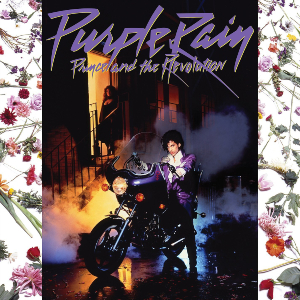
Purple Rain is the sixth studio album by the American singer, songwriter, producer, and multi-instrumentalist Prince. It was released on June 25, 1984, by Warner Bros. Records as the soundtrack album to the 1984 film of the same name. Purple Rain was musically denser than Prince's previous albums, emphasizing full band performances, and multiple layers of guitars, keyboards, electronic synthesizer effects, drum machines, and other instruments.
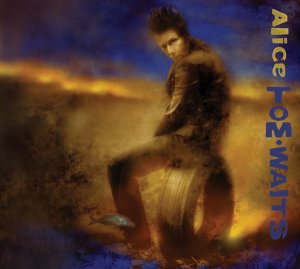
Alice is the fourteenth studio album by Tom Waits, released in 2002 on Epitaph Records. It consists of songs written by Waits and Kathleen Brennan for the opera Alice ten years earlier. The opera was a collaboration with Robert Wilson, with whom Waits had previously worked on The Black Rider. Waits and Wilson collaborated again on Woyzeck; the songs from it were recorded and released on Blood Money at the same time as Alice.

Closing Time is the debut album by American singer-songwriter Tom Waits, released on March 6, 1973, on Asylum Records. Produced and arranged by former Lovin' Spoonful member Jerry Yester, Closing Time was the first of seven of Waits' major releases by Asylum.

Mule Variations is the thirteenth studio album by American musician Tom Waits, released on April 16, 1999, on the ANTI- label. It was Waits' first studio album in six years, following The Black Rider (1993). The album was backed by an extensive tour in Europe and North America during the summer and autumn of 1999, which was Waits' first proper tour since 1987. Other promotional stops included a solo performance on VH1 Storytellers.

Blood Money is the fifteenth studio album by Tom Waits, released in 2002 on the ANTI- label. It consists of songs Waits and Kathleen Brennan wrote for Robert Wilson's opera Woyzeck. Waits had worked with Wilson on two previous plays: The Black Rider and Alice. Alice was released with Blood Money simultaneously in 2002.
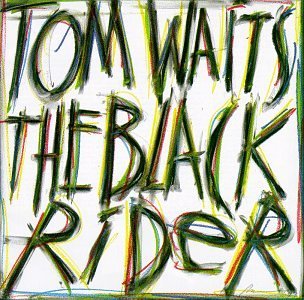
The Black Rider is the twelfth studio album by Tom Waits, released in 1993 on Island Records, featuring studio versions of songs Waits wrote for the play The Black Rider, directed by Robert Wilson and co-written by William S. Burroughs. The play is based on the German folktale Der Freischütz by Johann August Apel, which had previously been made into an opera by Carl Maria von Weber. It is about a clerk who makes a Faustian bargain for magic bullets, with tragic results. The play premiered on March 31, 1990, at the Thalia Theater in Hamburg, Germany. Its world English-language premiere occurred in 1998 at the Edmonton International Fringe Festival. Per the Los Angeles Times, "It’s most easily described as a Faustian musical-tragicomedy."

Bone Machine is the eleventh studio album by American singer and musician Tom Waits, released by Island Records on September 8, 1992. It won a Grammy Award for Best Alternative Music Album and features guest appearances by David Hidalgo, Les Claypool, Brain, and Keith Richards. The album marked Waits' return to studio albums, coming five years after Franks Wild Years (1987).

Franks Wild Years is the tenth studio album by Tom Waits, released 1987 on Island Records. It is the third in a loose trilogy that began with Swordfishtrombones. Subtitled "Un Operachi Romantico in Two Acts", the album contains songs written by Waits and collaborators for a play of the same name.. The play had its world premiere at the Briar St. Theatre in Chicago, Illinois, on June 22, 1986, performed by the Steppenwolf Theatre Company. "If I Have to Go" was used in the play, but released only in 2006 on Orphans: Brawlers, Bawlers & Bastards. The theme from "If I Have to Go" was used under the title "Rat's Theme" in the documentary Streetwise as early as 1984. The title is derived from "Frank's Wild Years", a track from Swordfishtrombones

Real Gone is the sixteenth studio album by Tom Waits, released October 4, 2004 in Europe, and October 5 in United States on the ANTI- label. The album was supported by the Real Gone Tour, playing sold out locations in North America and Europe in October and November 2004.

Dirty Work is a studio album by the English rock band the Rolling Stones. It was released on 24 March 1986 on the Rolling Stones label by CBS Records, their first under their new contract with Columbia Records. Produced by Steve Lillywhite, the album was recorded during a period when relations between Mick Jagger and Keith Richards had soured considerably, according to Richards' autobiography Life.
Kathleen Patricia Brennan is an American musician, songwriter, record producer, and artist. She is known for her work as a co-writer, producer, and influence on the work of her husband Tom Waits.

The discography of the American rock musician Tom Waits spans five decades. It consists of 17 studio albums, 3 live albums, 7 compilation albums, 23 singles, 2 soundtracks, and 1 box set. Waits has also released one video album and 16 music videos.

Attack & Release is the fifth studio album by American rock duo The Black Keys. It was produced by Danger Mouse and was released on April 1, 2008. The sessions saw the band transitioning away from their "homemade" ethos to record-making; not only was it the first time that the band completed an album in a professional studio, but it was also the first time they hired an outside producer to work on a record.

Anywhere I Lay My Head is the debut studio album by American actress and singer Scarlett Johansson, released on May 16, 2008 by Atco Records. She recorded it over five weeks in spring 2007 at Dockside Studios in Maurice, Louisiana. It was produced by Dave Sitek of TV on the Radio and includes collaborations with David Bowie and members of Yeah Yeah Yeahs and Celebration.
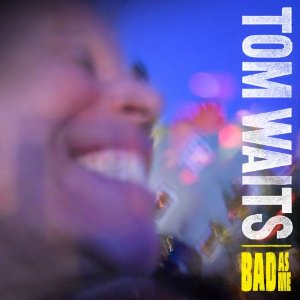
Bad as Me is the seventeenth and most recent studio album by American singer-songwriter Tom Waits, released on October 21, 2011 by Anti- Records. The album is known to have been recorded as early as February 2011 and was officially announced for release on August 23, 2011 on Waits' official web site and various social media networks. On the same day, the title track, "Bad as Me", was released as the album's first single on iTunes.



















